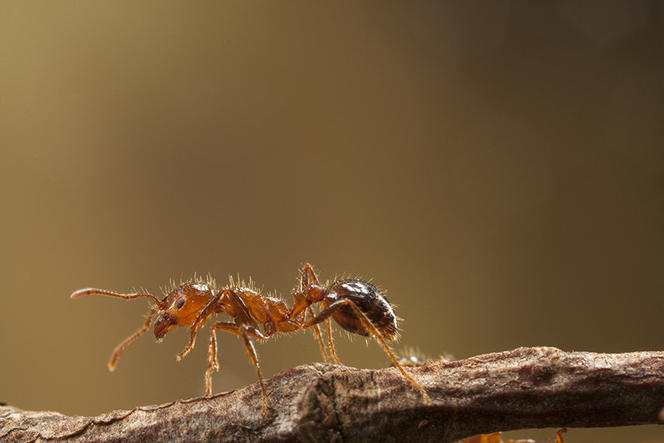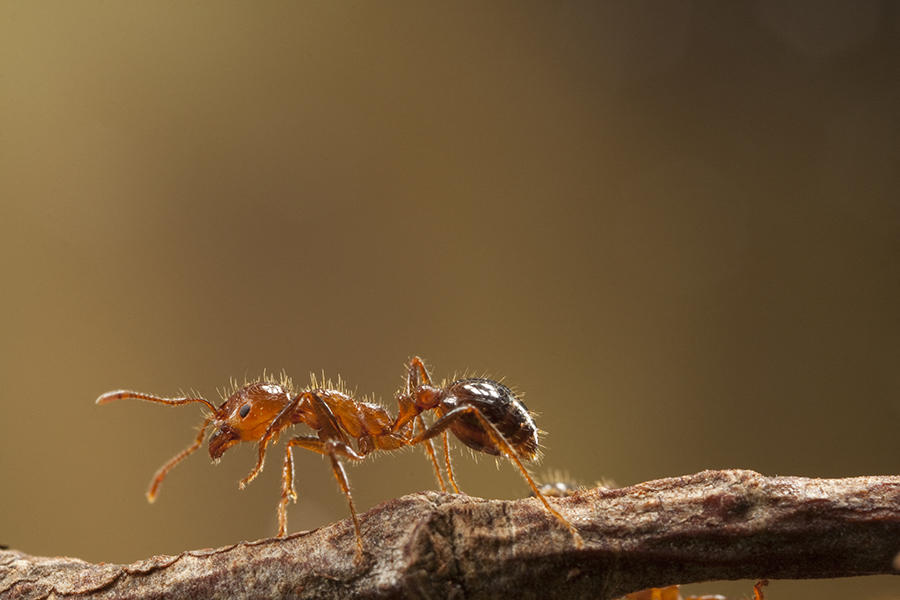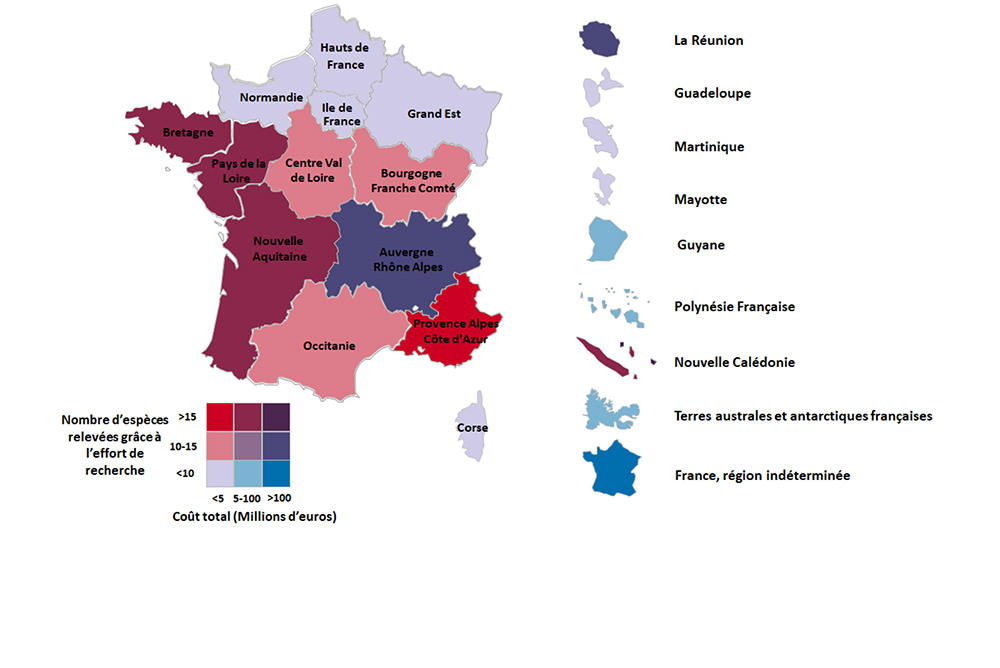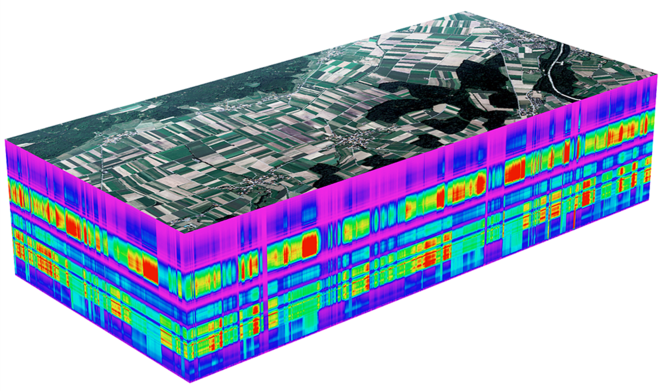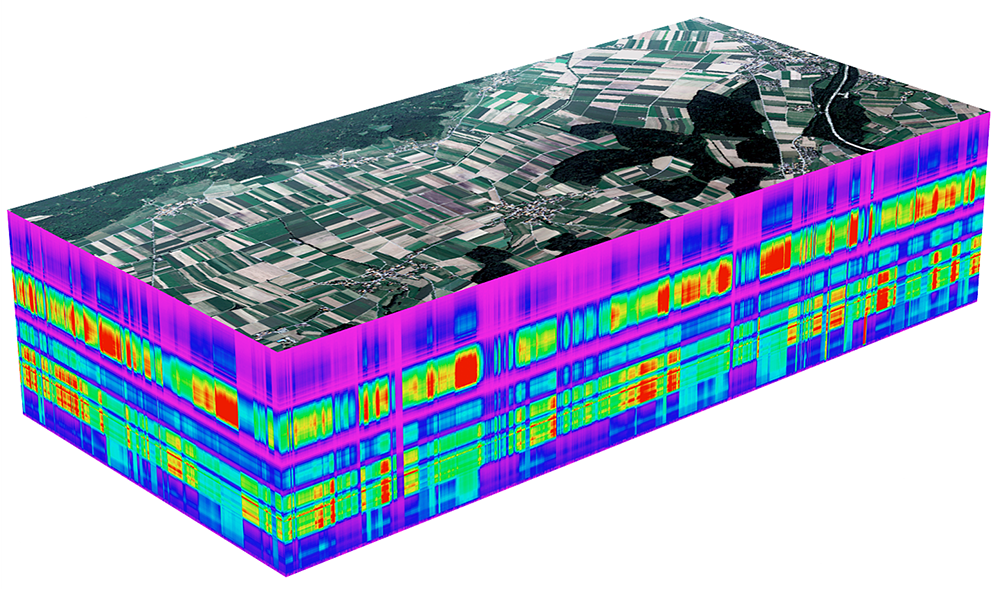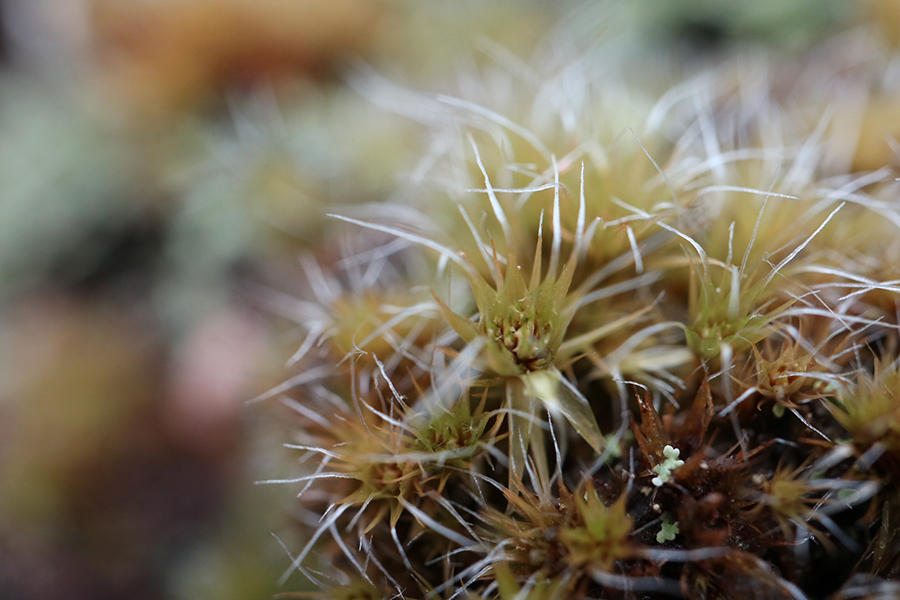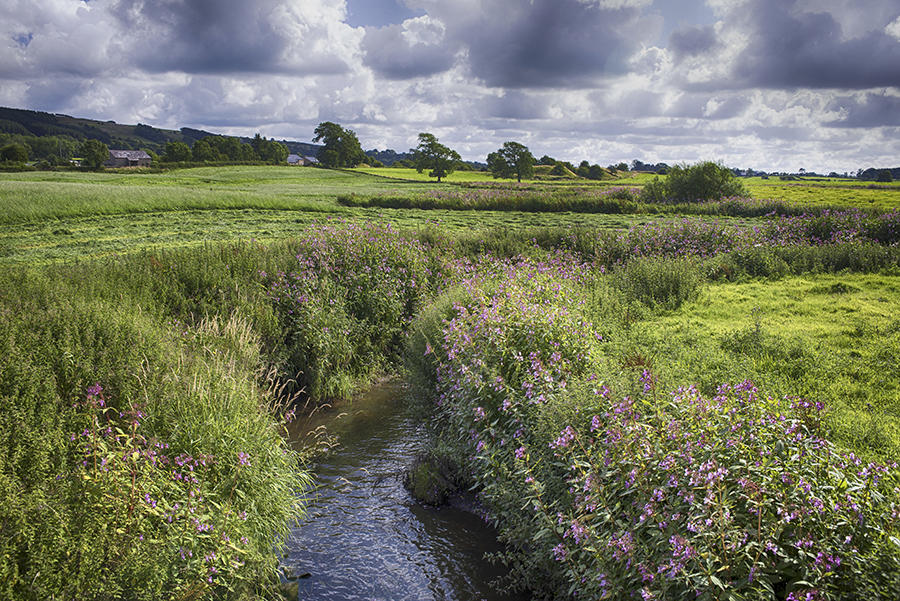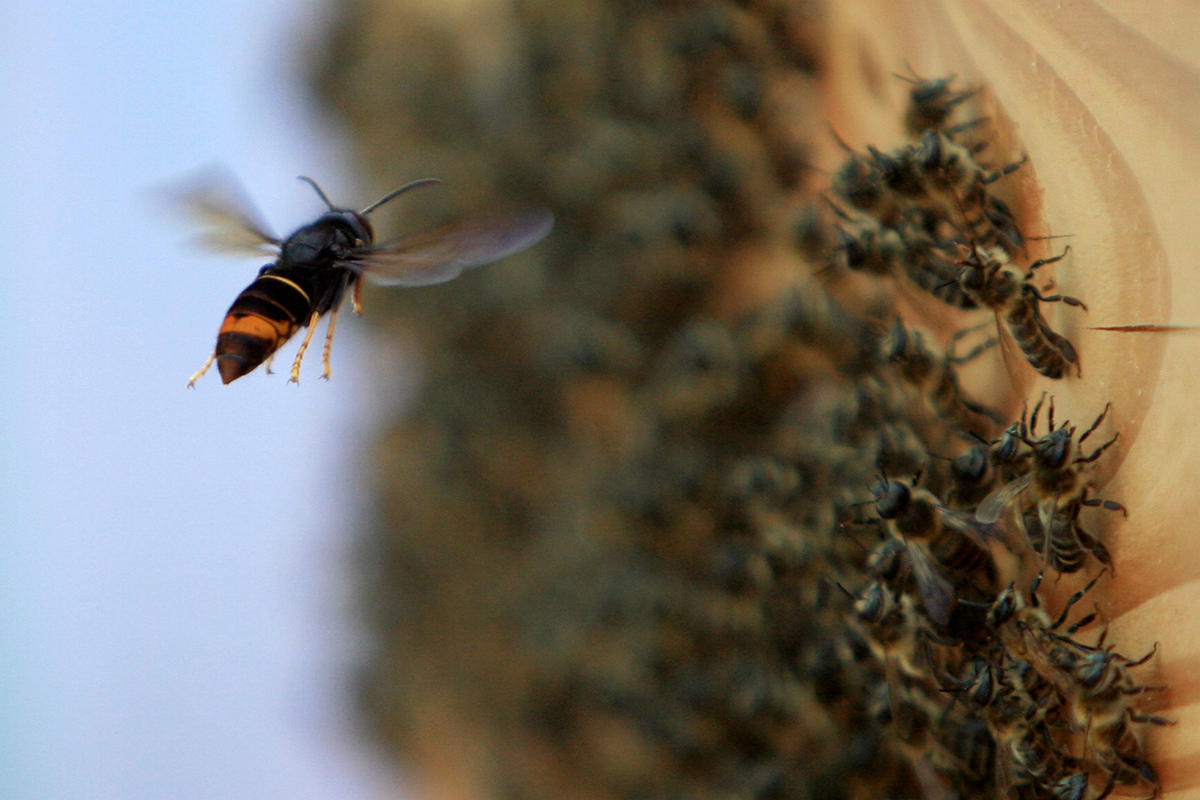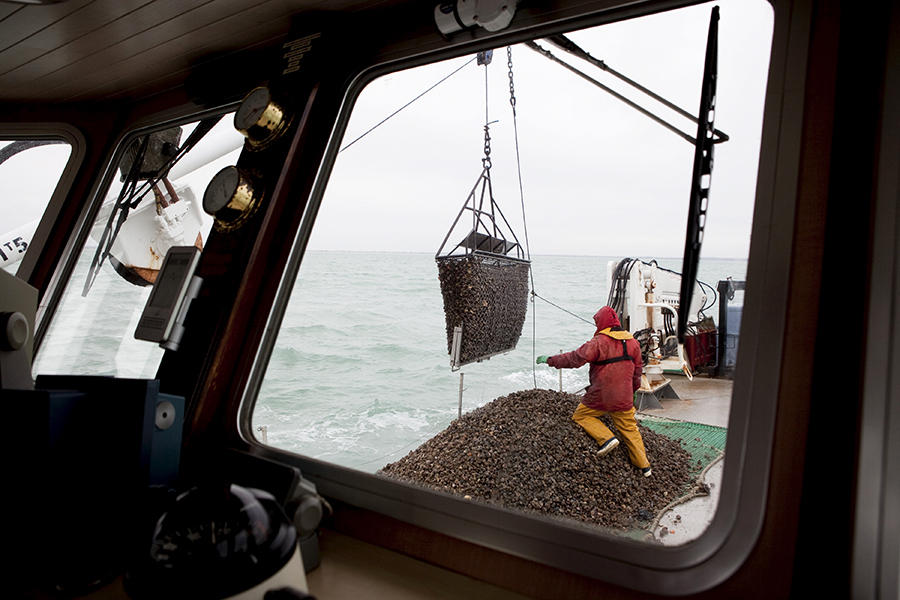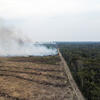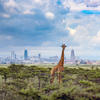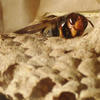You are here
Invasive species: an ecological and economic disaster
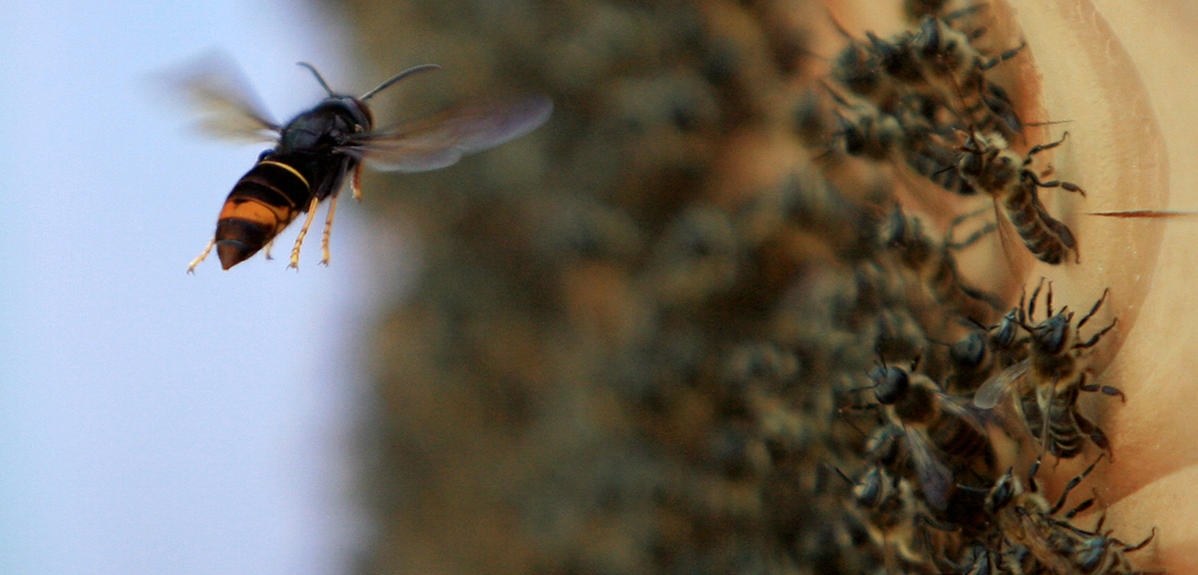
What is endangering the planet's biodiversity to such an extent that it is now the second leading cause of species extinction after habitat destruction and degradation? Oddly enough, it is neither global warming, nor pollution, nor the overexploitation of resources, but biological invasions, a term that refers to the tens of thousands of species of all kinds (plants, animals, fungi, microbes), from every terrestrial and aquatic environment, that human activities have displaced, whether deliberately or not, from their region of origin. When the invaders arrive in new habitats, they can wreak havoc, competing with local species for resources, becoming formidable predators or completely transforming ecosystems.
A rapidly growing threat
For example, the huge carnivorous Nile perch, introduced to Africa’s Lake Victoria in the 1950s to boost the fishing industry, has in just a few decades wiped out or threatened with extinction 200 of the 300 species of small cichlid fish in the lake. And since cichlids are also herbivores, detritivores or insectivores, the entire ecosystem has been thrown off balance. Another example is provided by the miconia, a tree native to South America, which was accidentally brought to many Pacific islands in “contaminated” soil and by construction machinery, and has invaded two thirds of Tahiti. The trees, which form dense thickets that prevent other plants from accessing light, now threaten some 70 endemic species on the French island.
Scientists have long sounded the alarm about the threat biological invasions pose to global biodiversity. The phenomenon is all the more worrying as it is likely to get worse in the future due to growing international trade and tourism, the two main vectors for the transport of alien species.
“Unfortunately, it is only too clear that decision-makers and the general public are still insufficiently aware of the problem,” points out Franck Courchamp, from the ESE laboratory.1 “The regulatory framework and its implementation are still too limited to effectively slow down the rate of introduction. For example, only 66 invasive alien species are included in the European Union's list of concern, whereas their number in Europe is thought to amount to between four and five thousand.”
This lack of awareness is partly explained by the fact that the ecological impacts of biological invasions are as diverse as the invasive species themselves, and therefore more complex to identify than the effects of climate change, for example. Hence researchers’ decision to change tack and draw the attention of the public authorities to the economic consequences of biological invasions. “Sadly, we're more likely to be heard when we talk about money than species extinctions and habitat degradation,” the ecologist confides.
No sector is spared
For the other negative effect of the invaders is the damage and heavy losses they cause to a wide range of industries, such as agriculture, tourism, forestry, fisheries, and property management. No sector is spared. Examples abound: the cotton worm, for instance, found practically all over the world, destroys at least 87 kinds of cultivated plant, leading to the loss of as much as 75% of some crops.
Invasive species can also be a threat to our health. For instance, not only do little fire ants damage infrastructure and electrical and communication networks, their extremely severe stings also send over 100 000 Americans to the doctor or hospital every year, and are responsible for up to a hundred fatalities. In France, Asian hornets decimate beekeepers' hives, while the sting of the tiger mosquitoes that have now taken up residence in the south of the country can transmit deadly viruses, including dengue, chikungunya and Zika. Plants such as the common ragweed (Ambrosia artemisiifolia) cause many allergies due to their pollen, and also result in yield losses when they invade crops.
Billions of dollars in damage
In order to assess the full extent of the problem and encourage decision-makers to take action, Courchamp and his team decided to determine the financial burden of invasive species on a global scale, something which had never been done before. For five years, the researchers collected statistics on thousands of costs reported in scientific papers and entered them into their InvaCost database. Ecologists and economists working together analysed and standardised the data and came up with a global sum: between 1970 and 2017, biological invasions cost the world's societies a staggering $1 288 billion!
“These figures are mindboggling, and they show no sign of slowing down, due to the rapid growth of worldwide trade,” the researcher points out. The summary published in Nature last March2 revealed that the average annual cost tripled every 10 years, reaching $162.7 billion for 2017 alone – or 20 times the combined budgets of the WHO and the UN secretariat.

What's more, the analysis only reveals the tip of the iceberg, as these amounts were significantly underestimated. In fact, very few species have been studied and very little damage recorded. For instance, in France, for which the team recently estimated losses to have reached between €1.2 and 11.5 billion in just 25 years, less than a hundred invasive species have been investigated, even though nearly a thousand are found in the country.
Another lesson from InvaCost is that the sums set aside for the prevention and monitoring of alien introductions remain marginal compared with the costs of the damage caused. However, scientists are well aware that prevention is better than cure and that blocking biological invasions or intervening early on when they do occur is far more effective – and cheaper – than fighting an advance that has become unstoppable. “Proactive measures to prevent infestations must become a priority. And the initiatives taken along these lines by New Zealand, Australia and the United States should become the norm,” Courchamp goes on.
New monitoring methods
In these three countries, which have been particularly impacted by biological invasions, strict biosecurity protocols have been put in place to intercept prohibited alien species at the border before they are allowed in, and to quarantine and disinfect goods with the aim of eliminating new kinds of stowaways, such as plant seeds and insects. And in New Zealand, the rapid detection of several colonies of little fire ants by members of the public or the authorities, near airports in particular, has on more than one occasion enabled the species to be stamped out at lower cost.
In laboratories, meanwhile, scientists are trying to develop novel methods for detecting invaders as early as possible. One technique seems particularly promising for monitoring invasive plants: hyperspectral imaging, which makes it possible to obtain images over a wide range of wavelengths, from the visible to the infrared. An airborne camera can distinguish an alien plant's spectral signature, which is often different from that of nearby local species. “The advantage of this method over field observation is that we can quickly map very large areas and cover terrain that was previously difficult to access,” explains Jonathan Lenoir, from the EDYSAN laboratory.3 “The test campaigns we carried out in Germany on the island of Sylt enabled us to accurately establish the presence of cactus moss, which in Europe is an invasive alien species.”

Another effective system that can be used in ocean environments is metabarcoding, which consists in identifying species by sequencing their DNA. By analysing seawater samples, it is possible to draw up an inventory of the wildlife present – whether small or large, invertebrates or fish – thanks to the genetic material they have released there. “In a recent study carried out in twelve marinas in the northwestern French region of Brittany, we used this method to single out a dozen exotic invertebrate species,” says Frédérique Viard, from the Institute of Evolutionary Science of Montpellier (ISEM).4 “The advantages of this tool are its speed and reliability. In particular, we can unambiguously differentiate between two species that look similar, even though one is native and the other alien.”
The profile of the invaders
To combat biological invasions, scientists are also trying to decipher how they work. A central question is to explain why these species are so successful in an environment where they have never lived. A number of reasons have been put forward. The first is the absence of natural enemies such as predators, pathogens and parasites, which normally regulate their population in their native range. Recent work by an international team in which Lenoir took part appears to support this idea. The researchers showed that in Europe, the most invasive alien plants, such as the Himalayan balsam, are native to other continents (Asia, America), whereas those originating from other regions of Europe are much less invasive.5

Another explanation is that invaders are all extremely opportunistic. Firstly, with regard to their diet, they eat anything – this is particularly true of rats, which are known to devastate island ecosystems. Secondly, concerning their habitat, they can proliferate in all kinds of environment, even if these are degraded or anthropogenically disturbed, unlike local species which are often rendered vulnerable by such disturbances. This is especially true at sea, where for certain taxonomic groups, 30% of the species found in harbours are non-native, compared with less than 1% in natural habitats.
Gaining a better understanding of the dynamics of invasions is key not only to taking action against those already underway, but also to planning ahead for those that might occur and lessening their impact as much as possible. Researchers are therefore establishing the ecological and behavioural profile of current invaders, and using their similarities to other species to predict which are likely to be the next ones and the regions they could infest.
The impact of climate change
Meanwhile, Céline Bellard, from the ESE laboratory, is trying to find out what effect climate change will have on invasions. “With rising temperatures, exotic species will be able to conquer new territories,” the researcher explains. “This is already the case in Europe, for example, where certain insects, such as the Asian hornet and the tiger mosquito, are moving ever further north. What's more, extreme weather events make local populations more vulnerable but benefit alien species, which are better able to cope with the stress.”
Using modelling, Bellard and her team have shown that, due to climate change, the distribution ranges of 100 of the most invasive organisms are likely to increase by an average of 2 to 6%,6 mainly in Europe, North America and Australia.
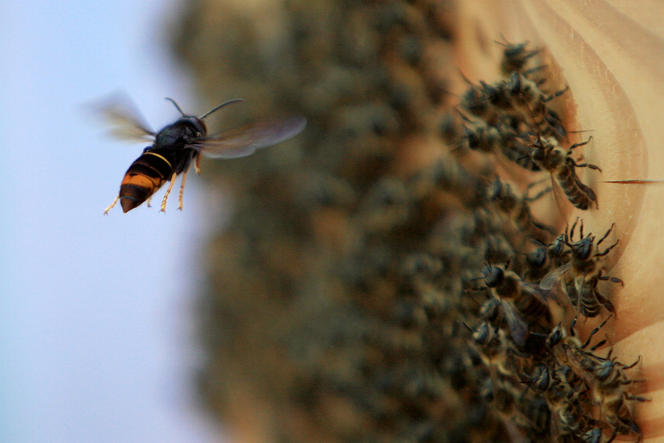
Invaders can be beneficial
While the harmful effects of invaders on biodiversity, the functioning of ecosystems and our economy are well established, many questions remain about their impact. “Studying all the aspects of the interactions of introduced species with other organisms and their ecosystem sometimes holds surprises,” Lenoir points out. “In some cases, there may even be beneficial effects.” This is true for the black cherry, a tree from North America that has invaded European forests. While it competes with native species, especially beeches and oaks, it also protects them from the forest cockchafer, as suggested by observations in the forest of Compiègne, near Paris. The larvae of this insect pest eat the roots of these trees, but not those of black cherry. When the latter is present, beech and oak seedlings appear to be less impacted.
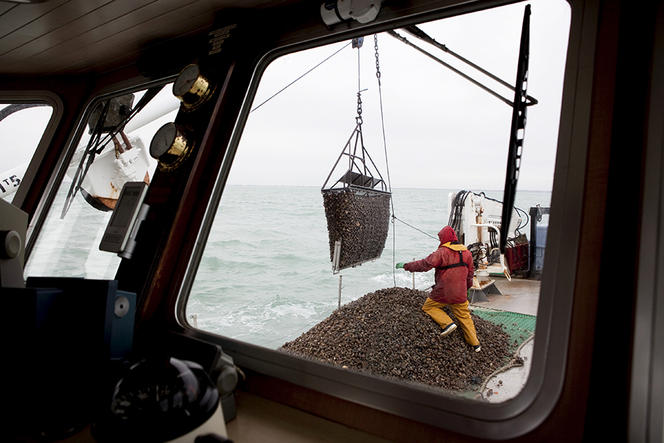
Another example is provided by the slipper limpet (Crepidula fornicata), a mollusc native to the east coast of the United States which has invaded the Atlantic and the English Channel. Its proliferation can lead to eutrophication of marine waters and therefore threaten other organisms. “However, its presence also allows the influx of new species, which can use its shell as a support, actually increasing local biodiversity,” Viard explains. In any case, whether we like it or not, invasive species are fully part of our ecosystems. For better or for worse.
The IUCN World Conservation Congress, 3 to 11 September, Palais des Congrès de Marseille Chanot: https://www.iucncongress2020.org/fr
- 1. Écologie, Systématique et Évolution (CNRS / Université Paris-Saclay / AgroParisTech).
- 2. “High and rising economic costs of biological invasions worldwide”, C. Diagne et al, Nature, n° 592, p.571-576, March 2021. DOI: 10.1038 / s41586-021-03405-6.
- 3. Écologie et Dynamique des Systèmes Anthropisés (CNRS / Université de Picardie Jules Verne).
- 4. CNRS / Université de Montpellier / IRD.
- 5. “Dimensions of invasiveness: links between local abundance, geographic range size and habitat breadth in Europe's alien and native floras”, T.S. Fristoe et al, PNAS, 118 (22), 2021. DOI: 10.1073 / pnas.2021173118.
- 6. “Insights from modeling studies on how climate change affects invasive alien species geography”, Bellard, C. et al, Ecology and Evolution, Vol. 8, n ° 12, June 2018, DOI 10.1002 / ece3.4098.



